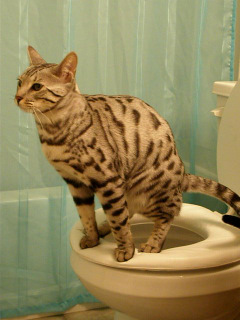Reasons You Must Never Flush Cat Poop Down Your Toilet - Important Facts
Reasons You Must Never Flush Cat Poop Down Your Toilet - Important Facts
Blog Article
The article author is making a number of good annotation about How to Dispose of Cat Poop and Litter Without Plastic Bags in general in this post further down.

Intro
As feline owners, it's necessary to be mindful of exactly how we get rid of our feline pals' waste. While it might appear practical to flush feline poop down the bathroom, this method can have detrimental consequences for both the environment and human health.
Alternatives to Flushing
Luckily, there are much safer and a lot more accountable ways to deal with cat poop. Take into consideration the complying with alternatives:
1. Scoop and Dispose in Trash
One of the most common technique of getting rid of cat poop is to scoop it into an eco-friendly bag and throw it in the trash. Make certain to use a committed clutter scoop and get rid of the waste promptly.
2. Use Biodegradable Litter
Select biodegradable pet cat clutter made from materials such as corn or wheat. These trashes are eco-friendly and can be securely gotten rid of in the garbage.
3. Bury in the Yard
If you have a lawn, think about burying feline waste in a designated area far from vegetable gardens and water sources. Make sure to dig deep sufficient to stop contamination of groundwater.
4. Set Up a Pet Waste Disposal System
Invest in a pet garbage disposal system particularly designed for cat waste. These systems utilize enzymes to break down the waste, lowering odor and environmental influence.
Health Risks
Along with ecological worries, purging feline waste can also posture wellness threats to people. Feline feces might have Toxoplasma gondii, a bloodsucker that can trigger toxoplasmosis-- a possibly serious disease, particularly for pregnant females and people with weakened immune systems.
Ecological Impact
Flushing pet cat poop presents dangerous virus and bloodsuckers into the water, presenting a significant threat to aquatic ecological communities. These pollutants can negatively influence aquatic life and compromise water high quality.
Verdict
Accountable animal ownership expands beyond giving food and shelter-- it also entails proper waste monitoring. By refraining from purging cat poop down the bathroom and choosing alternative disposal techniques, we can decrease our environmental footprint and secure human wellness.
Why Can’t I Flush Cat Poop?
It Spreads a Parasite
Cats are frequently infected with a parasite called toxoplasma gondii. The parasite causes an infection called toxoplasmosis. It is usually harmless to cats. The parasite only uses cat poop as a host for its eggs. Otherwise, the cat’s immune system usually keeps the infection at low enough levels to maintain its own health. But it does not stop the develop of eggs. These eggs are tiny and surprisingly tough. They may survive for a year before they begin to grow. But that’s the problem.
Our wastewater system is not designed to deal with toxoplasmosis eggs. Instead, most eggs will flush from your toilet into sewers and wastewater management plants. After the sewage is treated for many other harmful things in it, it is typically released into local rivers, lakes, or oceans. Here, the toxoplasmosis eggs can find new hosts, including starfish, crabs, otters, and many other wildlife. For many, this is a significant risk to their health. Toxoplasmosis can also end up infecting water sources that are important for agriculture, which means our deer, pigs, and sheep can get infected too.
Is There Risk to Humans?
There can be a risk to human life from flushing cat poop down the toilet. If you do so, the parasites from your cat’s poop can end up in shellfish, game animals, or livestock. If this meat is then served raw or undercooked, the people who eat it can get sick.
In fact, according to the CDC, 40 million people in the United States are infected with toxoplasma gondii. They get it from exposure to infected seafood, or from some kind of cat poop contamination, like drinking from a stream that is contaminated or touching anything that has come into contact with cat poop. That includes just cleaning a cat litter box.
Most people who get infected with these parasites will not develop any symptoms. However, for pregnant women or for those with compromised immune systems, the parasite can cause severe health problems.
How to Handle Cat Poop
The best way to handle cat poop is actually to clean the box more often. The eggs that the parasite sheds will not become active until one to five days after the cat poops. That means that if you clean daily, you’re much less likely to come into direct contact with infectious eggs.
That said, always dispose of cat poop in the garbage and not down the toilet. Wash your hands before and after you clean the litter box, and bring the bag of poop right outside to your garbage bins.
https://trenchlesssolutionsusa.com/why-cant-i-flush-cat-poop/

Do you enjoy reading up on How to Dispose of Cat Poop and Litter Without Plastic Bags? Create a short review below. We'd be glad to see your insights about this article. In hopes that you come back again soon. Don't hesitate to take the time to distribute this write-up if you enjoyed it. I cherish reading our article about Can You Flush Cat Poop Down The Toilet?.
Call Today Report this page